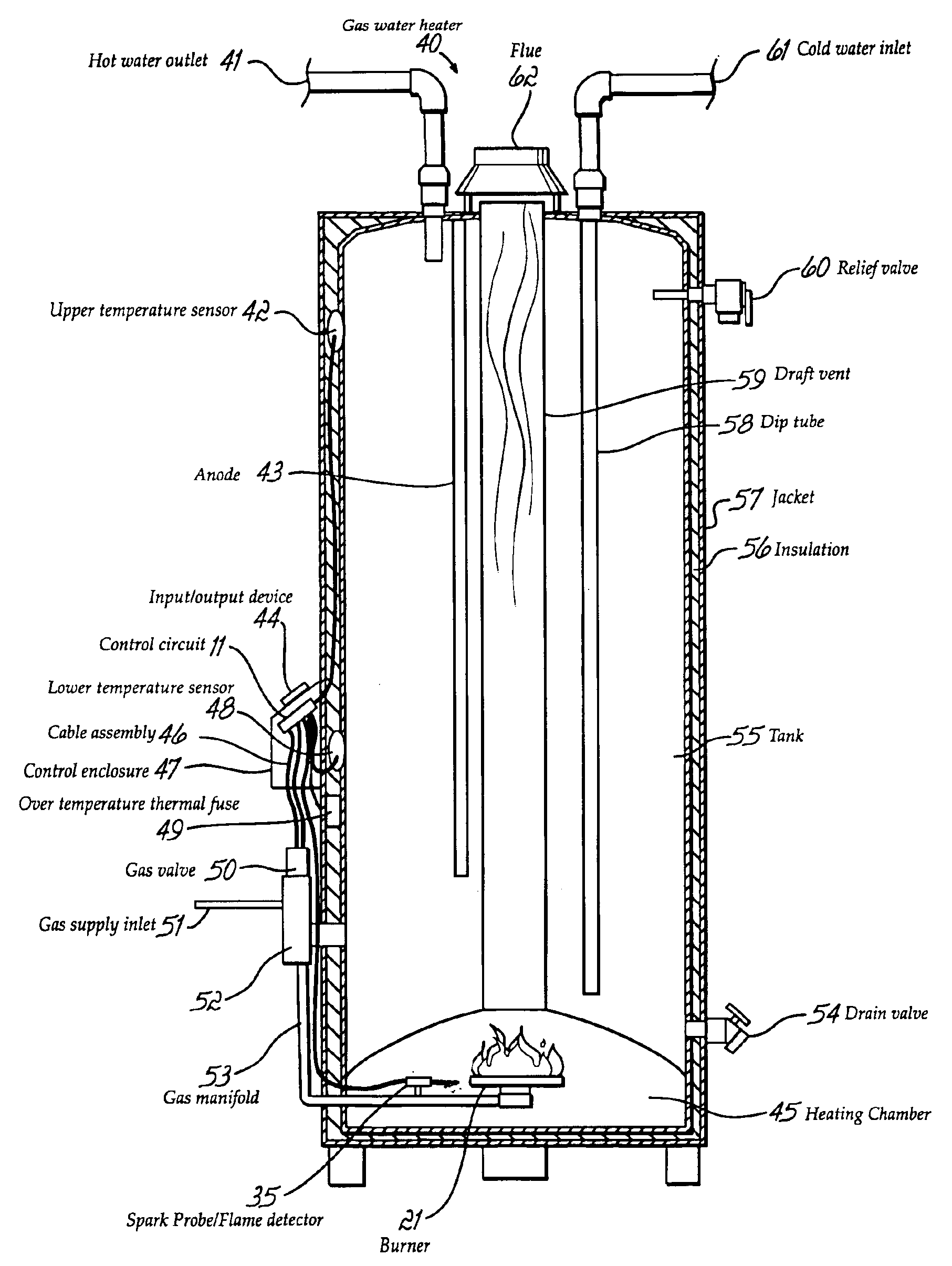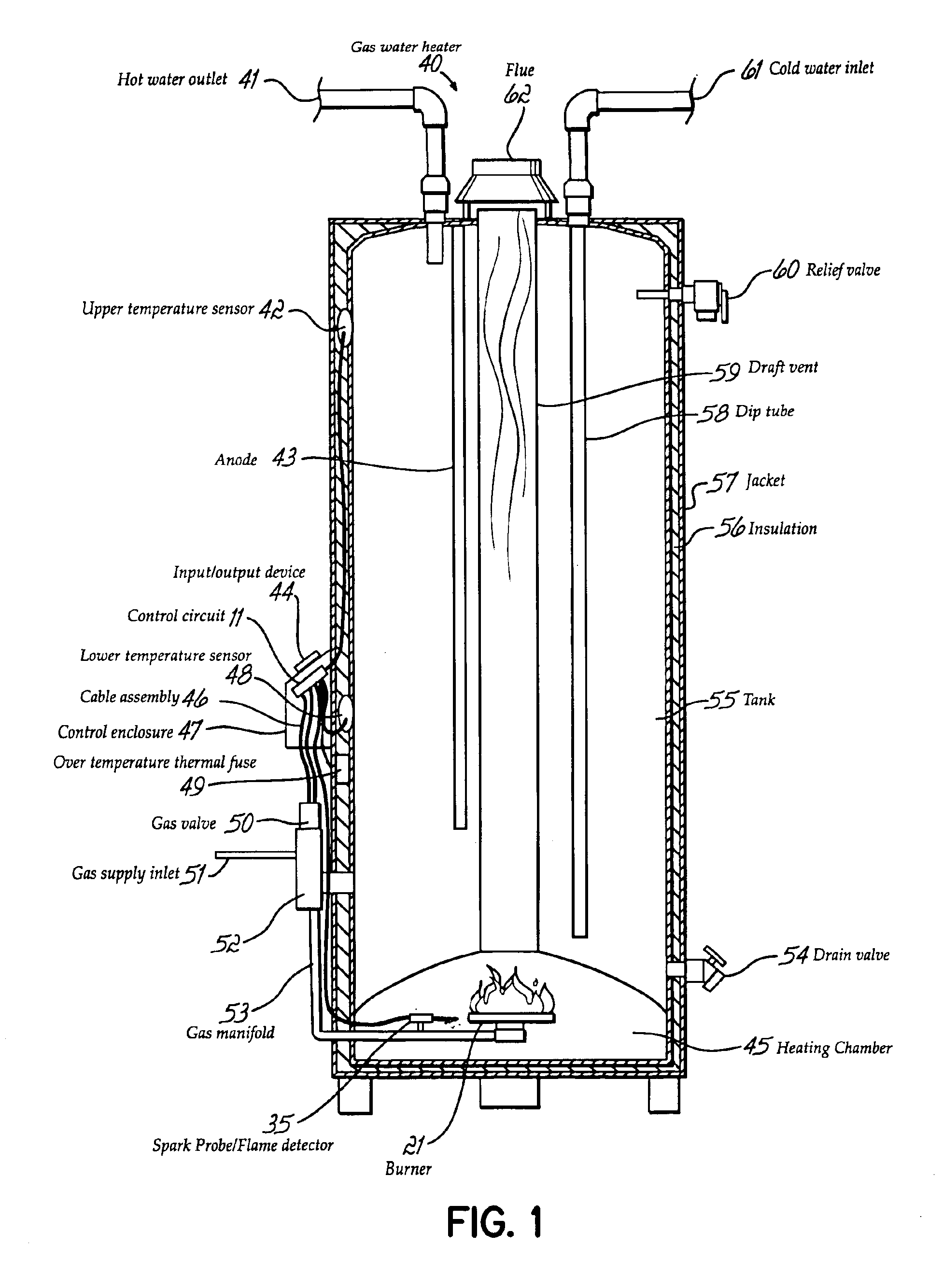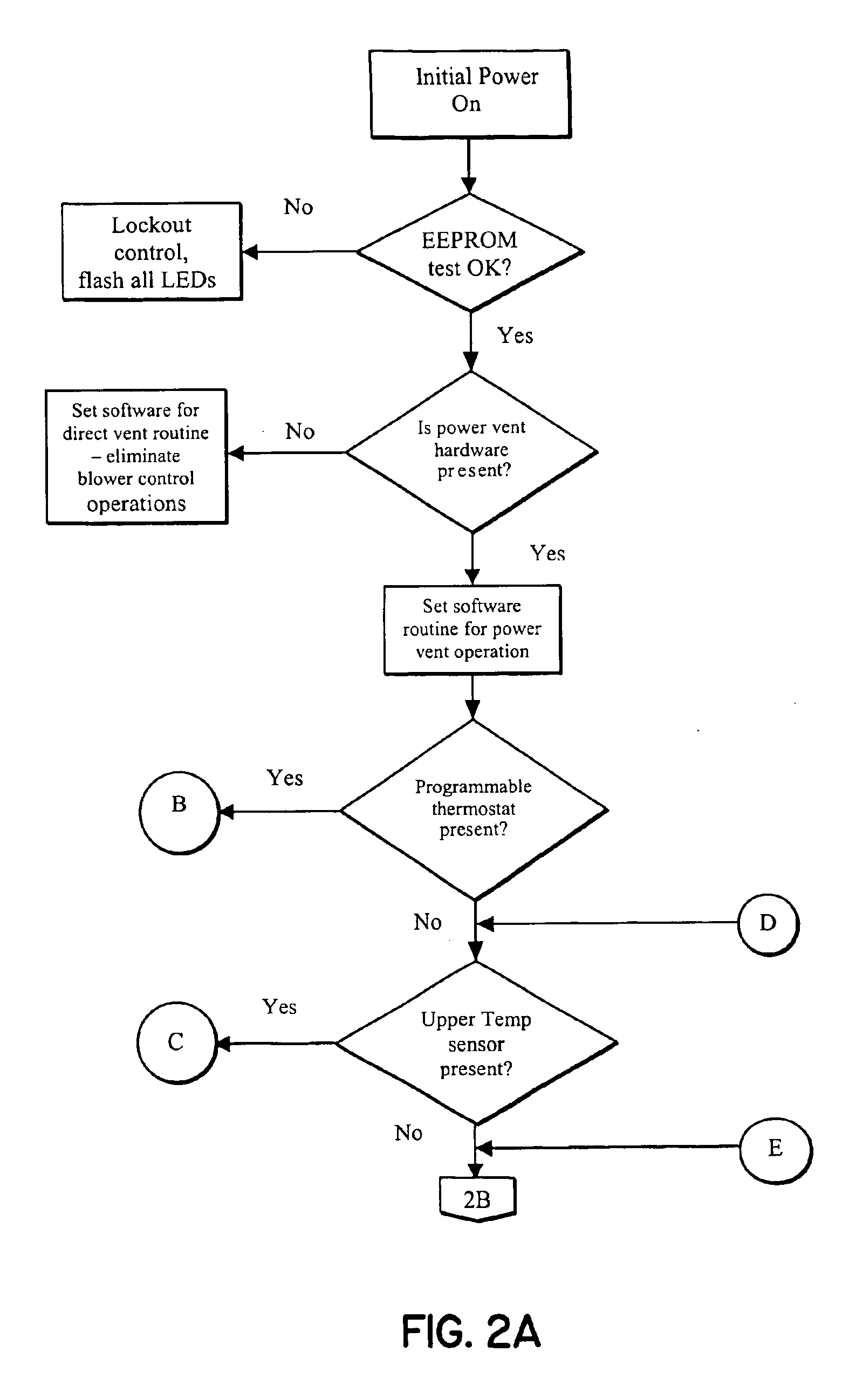Gas water heater and method of operation
a technology for gas water heaters and fuel, which is applied in the direction of heating types, lighting and heating apparatuses, instruments, etc., can solve the problems of insufficient use of electronic controls of gas water heaters, high cost of hot surface igniters, and inability to effectively control the temperature of water heaters, so as to improve efficiency and ensure the effect of constant temperatur
- Summary
- Abstract
- Description
- Claims
- Application Information
AI Technical Summary
Benefits of technology
Problems solved by technology
Method used
Image
Examples
Embodiment Construction
[0024]The present invention is directed to methods and devices for substantially reducing the stacking effect within a storage type gas water heater with the aid of multiple temperature sensors.
[0025]For example, the present invention is used for, or in conjunction with, practically any apparatus that is adapted to provide heat by igniting natural gas, propane gas, or practically any other fuel that is ignited to provide heat. In particular, the apparatus is a storage type residential gas water heater. The apparatus may also be a commercial water heater, boiler, or any other type of water heating appliance.
[0026]The ignition device is practically any device that is adapted to ignite fuel. For instance, the ignition device is a single electrode spark ignition system or a dual electrode spark ignition system. The ignition device may also be a hot surface igniter or standing pilot. The ignition device of the described embodiment is a single electrode spark ignition system.
[0027]As illu...
PUM
 Login to View More
Login to View More Abstract
Description
Claims
Application Information
 Login to View More
Login to View More - R&D
- Intellectual Property
- Life Sciences
- Materials
- Tech Scout
- Unparalleled Data Quality
- Higher Quality Content
- 60% Fewer Hallucinations
Browse by: Latest US Patents, China's latest patents, Technical Efficacy Thesaurus, Application Domain, Technology Topic, Popular Technical Reports.
© 2025 PatSnap. All rights reserved.Legal|Privacy policy|Modern Slavery Act Transparency Statement|Sitemap|About US| Contact US: help@patsnap.com



